Overview
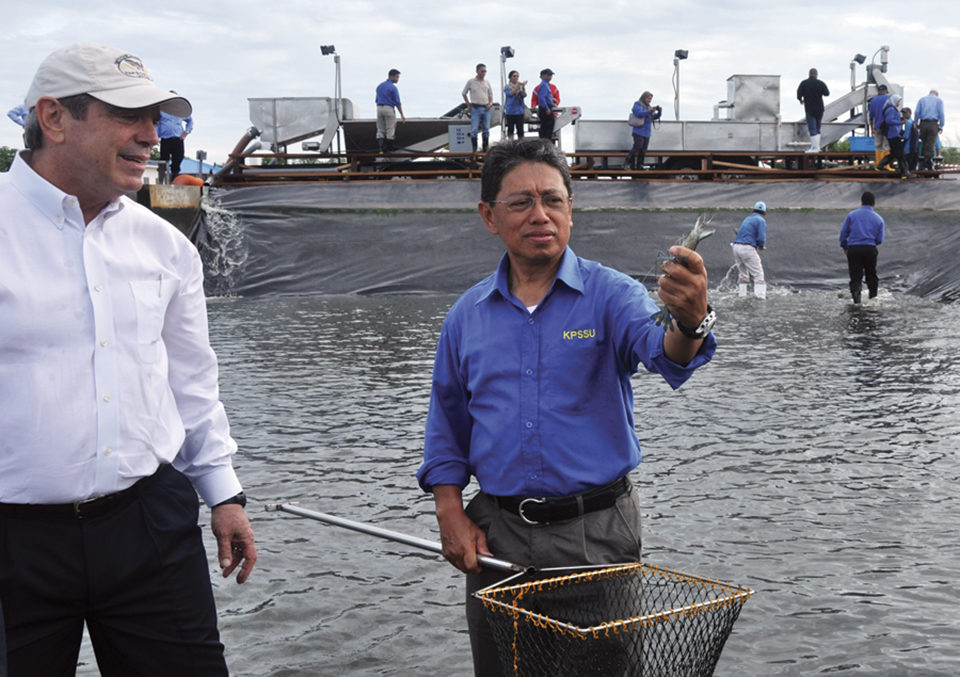
During the late 1960s and 1970s, pioneering groups around the world attempted to apply the shrimp-farming techniques developed by Dr. Motosaku Fujinaga in Japan to their local species. Most of those attempts proved unsuccessful.
In Taiwan, Dr. I. Chiu Liao selected black tiger shrimp (Penaeus monodon) as the best of several species, because it spawned large numbers of eggs, grew at the fastest rate and adapted well to artificial feeds and intensive ponds. His team developed techniques for spawning wild adults, rearing postlarvae and growing shrimp to market size in aerated ponds with formulated feeds. This led to a fast-growing business, and Taiwan became the center of shrimp-farming technology in the Asian region.
Black tiger shrimp are widely distributed throughout the IndoPacific, so hatcheries in the region could easily obtain wild spawners from the sea. Consequently, Taiwanese technology was transferred throughout Asia, and black tiger shrimp became the dominant farmed species.
Over time, wild spawners gradually became more infected with various diseases, and farm production of black tiger shrimp steadily declined.
Following the pandemic of white spot syndrome virus during the 1990s, specific-pathogen-free (SPF), genetically improved Pacific white shrimp (Litopenaeus vannamei) were introduced to Asia. Pond productivity greatly improved, and farmers throughout Asia quickly shifted from infected black tiger shrimp to SPF white shrimp. This led to commoditization and declines in prices for small for medium-sized shrimp.
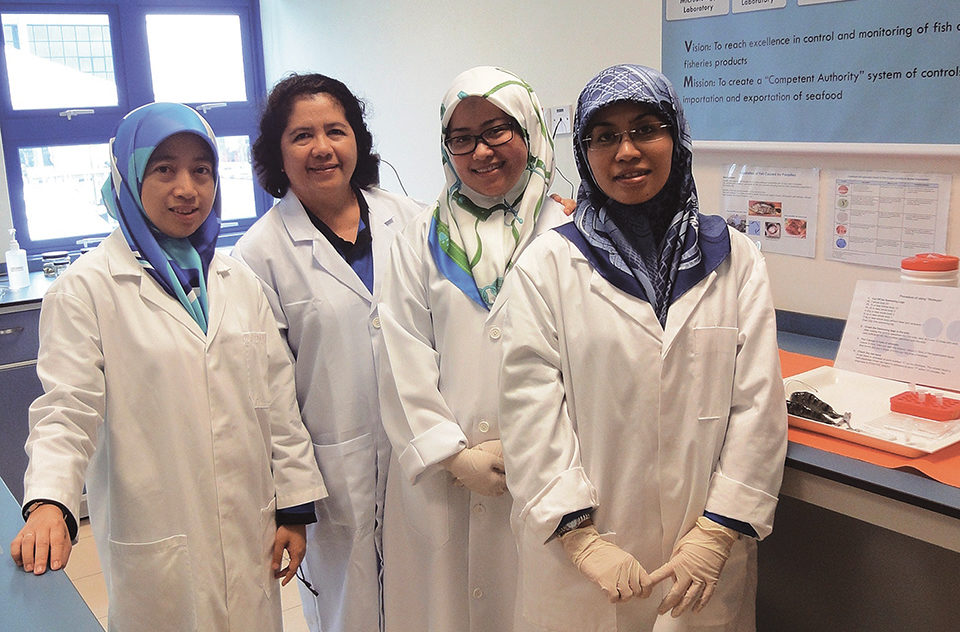
Brunei project
In 2007, the Department of Fisheries of Brunei Darussalam and Integrated Aquaculture International undertook a five-year project to develop technology to efficiently rear black tiger shrimp to premium large sizes. This was one of various initiatives by the Ministry of Industry and Primary Resources of Brunei Darussalam to develop export-oriented businesses based on renewable natural resources.
The project consisted of several components, including health management, selective breeding, nutrition and pond grow-out. This article provides an overview of the project and the results achieved thus far. Subsequent articles will provide further information about each component of the project.
Health management
In order to restore the natural capability of black tiger shrimp to spawn large numbers of eggs, survive well in intensive ponds and grow rapidly to large sizes, SPF stocks were needed. The first step in the development of this process was establishment of the Aquatic Animal Health Service Center, a diagnostic lab capable of quickly processing large numbers of samples for known and emerging pathogens of shrimp, in Brunei Darussalam. The center is equipped for conventional and real-time polymerase chain reaction (PCR) testing with robotic DNA extraction, histopathology with automatic tissue processing and staining, and microbiology.
Once the health center was established, adult black tiger shrimp (F0 generation) were collected by offshore trawling in the coastal waters of Brunei Darussalam. Each spawn was considered a founder family and subjected to a two-year process of primary and secondary quarantine with rigorous diagnostic testing of all life stages for 15 specified pathogens.
If disease was detected in a given family at any stage, that family was discarded. Only after two years in quarantine, when the F2 generation was produced without disease detection, were those offspring considered SPF and transferred to the nucleus breeding center.
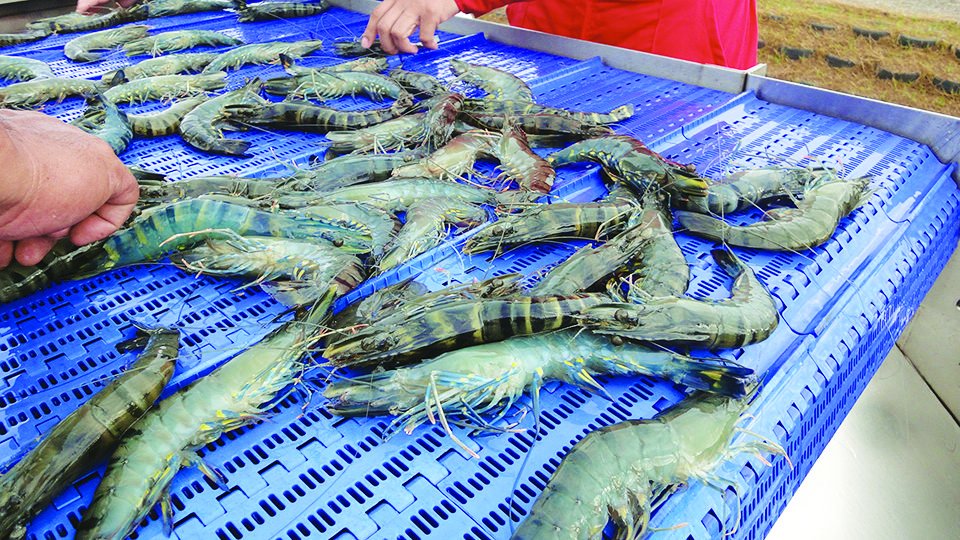
Selective breeding
Given the continuous process of quarantine over the last five years, the breeding center houses families ranging from F2 to F5 generations. The center is highly bio-secure, with disinfected water, access only by authorized personnel, and indoor facilities for maturation, spawning, larval rearing, nursery, juvenile rearing and grow-out.
Families are reared separately to 3-gram size, at which point they are tagged with fluorescent elastomer injections in the tail muscle and pooled for communal rearing. A parallel group of families is tagged for grow-out in bio-secure ponds. When shrimp reach 25 to 30 grams, the best-performing families and individuals within each family are selected as parents for the next generation. The primary selection criteria are growth, survival and reproductive performance.
Nutrition
A Shrimp Nutrition Research Centre was established with 40 1.8-cubic-meter microcosm tanks to continually conduct trials using SPF families to evaluate feed ingredients, nutrient concentrations and commercial diets. Over 20 eight-week trials have been conducted thus far using feeds formulated and manufactured on site.
The nutrition program prepares high-performance diets based on in-house formulations to supplement commercial growout and reproductive-conditioning feeds. It has also developed formulations to reduce and replace fishmeal.
Pond grow-out
The Aquaculture Research and Development Centre (ARDC) is a new pilot-scale farm with 15 ponds of 0.25-hectare and two ponds of 0.7-ha area. The facility was designed to test new technologies for production of large black tiger shrimp. The best-performing technologies from this pilot-scale farm will be applied to a 100-ha farm being prepared for construction nearby.
To avoid disease transmission from carriers in the water supply, seawater for the pilot farm was drawn from a filtration gallery within the beach sand. To avoid the growth-depressing effects of sludge accumulation and water quality deterioration, ponds were designed with plastic liners and various types of self-cleaning drains. To minimize water and energy requirements, ponds were equipped with a central water reuse system and various types of experimental aerators.
Various commercial feeds were tested, and one of the top-performing feeds was selected for this trial. To maximize feed efficiency, ponds were equipped with a centralized, pneumatically controlled feeding system. To assure premium quality of the final product, a mechanical harvest and melanosis treatment system was used.
Production trial
In the first production trial, 30-day-old black tiger shrimp postlarvae were produced from SPF parents and stocked in ARDC ponds at densities of 20-30/m2 (Table 1). Unanticipated delays in filling ponds led to stocking postlarvae in clearwater without a normal plankton bloom. During the first weeks after stocking, some abnormal shrimp were observed in the ponds.
Howell, Production parameters, Table 1
| Parameter | Average | Range |
|---|
Parameter | Average | Range |
|---|---|---|
| Stocking density (shrimp/m2) | 22 | 20-30 |
| Days of culture | 130 | 103-146 |
| Survival (%) | 57 | 27-84 |
| Yield (mt/ha) | 6.1 | 2.3-10.6 |
| Harvest size (g/shrimp) | 50.1 | 40.0-61.0 |
| Feed-conversion ratio | 1.49 | 1.21-1.68 |
| Weekly weight gain (g) | 2.8 | 2.3-3.3 |
Histopathology revealed signs of melanized nodules in tail muscles and hemocytic enteritis in the animals’ guts. This was attributed to the stress associated with stocking shrimp in clearwater and the toxins associated with harmful algae that initially dominated blooms in some of the ponds.
During the production cycle, waste water from ponds was discharged to a drainage ditch, pumped into a three-phase treatment system and returned to the ponds. No new water, aside from rainfall, was introduced. Water quality, which was monitored twice daily in each pond during the production cycle, remained within normal ranges. Feed was distributed to each pond six to 12 times daily, and feeding rates were adjusted weekly based on growth and survival estimates.
Results
After 103 to 146 days, ponds were harvested. The results for 12, 0.25-ha ponds are summarized in Table 1. Survival averaged 57 percent, which was somewhat lower than expected, due to stressful conditions in many of the ponds at stocking due to undesirable clearwater conditions.
Shrimp grew at a rate of 2.3-3.3 g/week to sizes of 40 to 61 grams with feed-conversion ratios (FCRs) of 1.21 to 1.68. These fast growth rates, large sizes and low FCRs are a promising demonstration of the potential for efficient production of large-sized black tiger shrimp. It is likely that results will continue to improve as genetic selection progresses and advanced pond management procedures are refined.
(Editor’s Note: This article was originally published in the May/June 2012 print edition of the Global Aquaculture Advocate.)
Now that you've reached the end of the article ...
… please consider supporting GSA’s mission to advance responsible seafood practices through education, advocacy and third-party assurances. The Advocate aims to document the evolution of responsible seafood practices and share the expansive knowledge of our vast network of contributors.
By becoming a Global Seafood Alliance member, you’re ensuring that all of the pre-competitive work we do through member benefits, resources and events can continue. Individual membership costs just $50 a year.
Not a GSA member? Join us.
Authors
-
Chris Howell
Integrated Aquaculture International
3303 West 12th Street
Hastings, Nebraska 68902-0609 USA -
Hasnah Ibrahim
Brunei Ministry of Industry and Primary Resources
-
Sabri Taha and Rosinah Yussof
Brunei Department of Fisheries
-

George Chamberlain
Integrated Aquaculture International
3303 West 12th Street
Hastings, Nebraska 68902-0609 USA
Tagged With
Related Posts
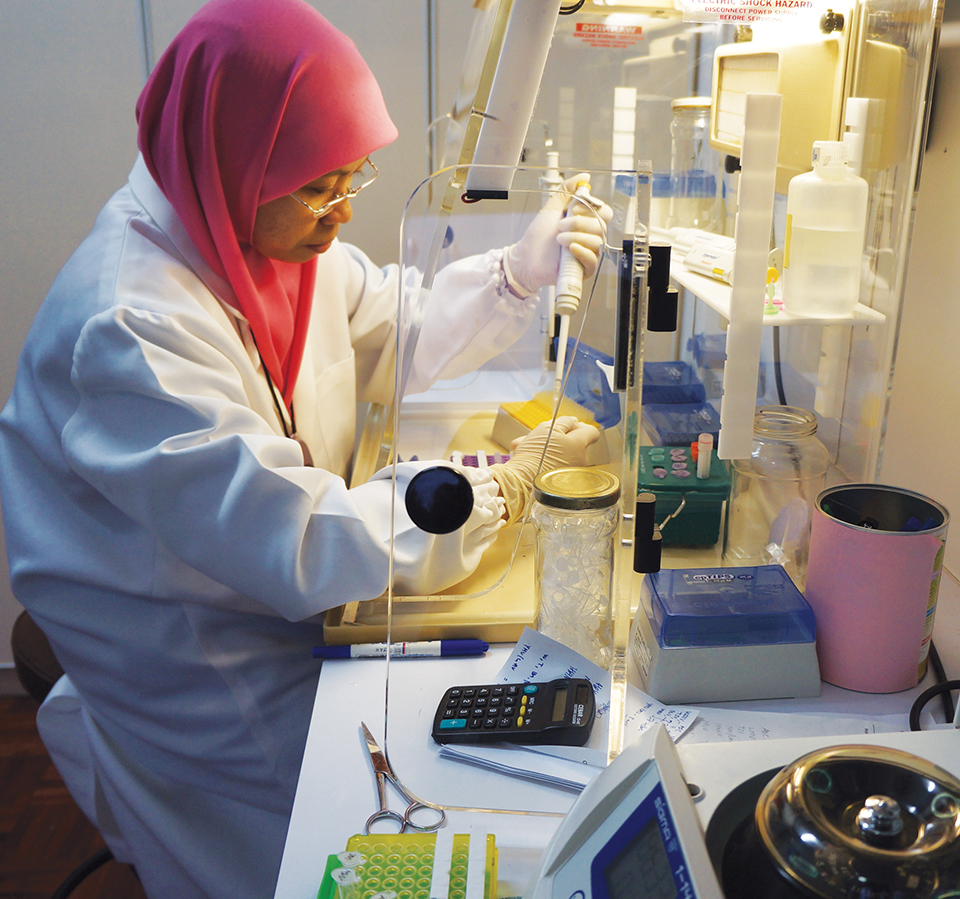
Health & Welfare
Brunei project develops technology for large black tiger shrimp production, part 2
For a five-year project undertaken in Brunei Darussalam to develop advanced technology for production of large black tiger shrimp, a comprehensive disease diagnostic laboratory was developed to enable detection of known and emerging shrimp pathogens by molecular and histological methods.
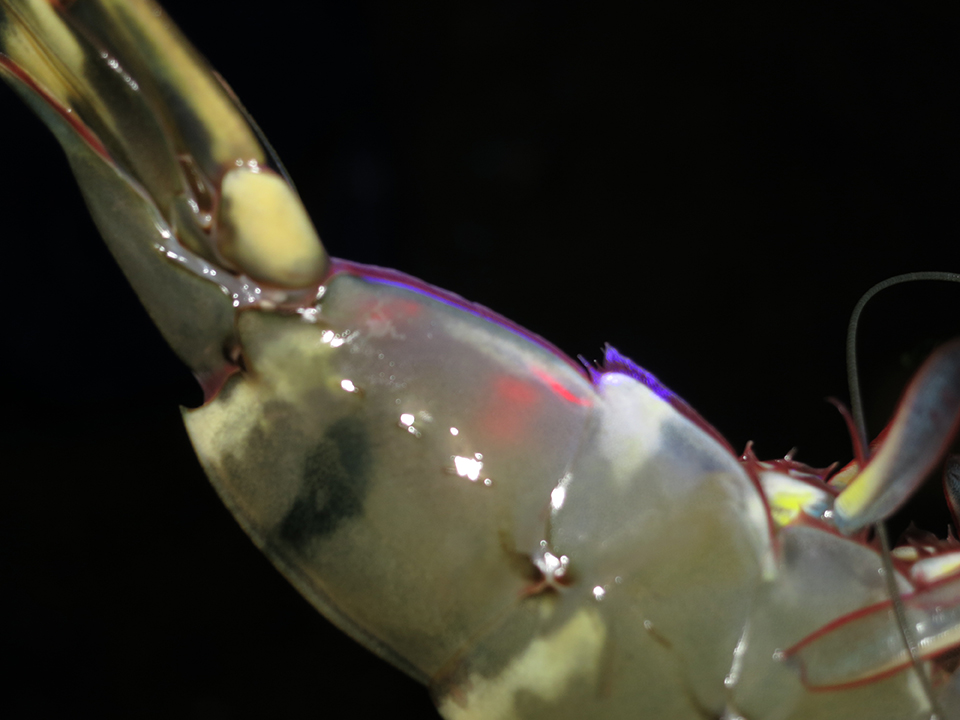
Health & Welfare
Brunei project develops technology for large black tiger shrimp production, part 3
Specific pathogen-free offspring developed from founder populations of P. monodon collected from Brunei coastal waters were introduced into a biosecure breeding program, where they have been reared to the fifth generation using family-based selection for reproduction and growth.
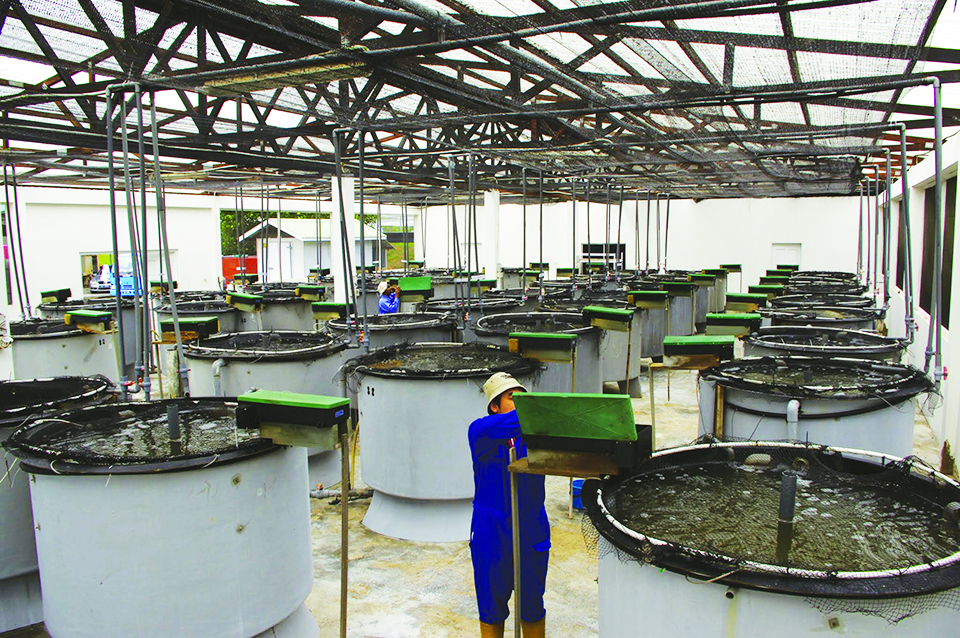
Health & Welfare
Brunei project develops technology for large black tiger shrimp production, part 4
Nutrition research run in conjunction with the breeding program ensures that cost-effective feeds are optimized for shrimp performance for a five-year project undertaken in Brunei Darussalam to develop advanced technology for production of large black tiger shrimp.
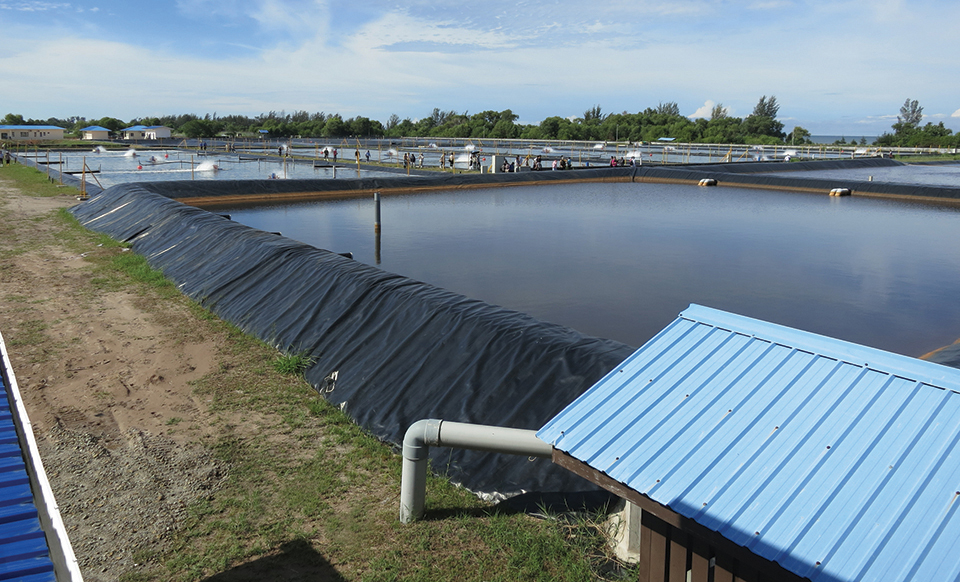
Health & Welfare
Brunei project develops technology for large black tiger shrimp production, part 5
The final article in a series about a project in Brunei to develop technology for production of black tiger shrimp focuses on the development of advanced grow-out ponds and practices with enhanced systems for biosecurity, sludge removal, water reuse, energy efficiency, automatic feeding and mechanical harvesting.



